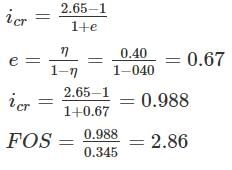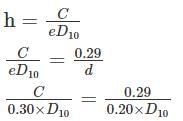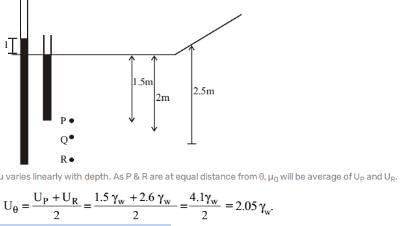Test: Soil Mechanics- 3 - Civil Engineering (CE) MCQ
10 Questions MCQ Test GATE Civil Engineering (CE) 2025 Mock Test Series - Test: Soil Mechanics- 3
Except which among the following properties, the permeability of soil increases?
Which one of the following is correct in respect of pore water pressure u and effective stress σ, in the soil just below the bottom of a pond due to a 2 m rise in water level in the pond?
| 1 Crore+ students have signed up on EduRev. Have you? Download the App |
A fully saturate capillary zone of thickness 2 m exists above the water table in a fine silty sand deposit. Water is the pore water pressure at 1.5 m above the water table?
According to Darcy’s law for flow through porous media, the velocity is proportional to
In the figure shown above, which one of the following correctly represents effective stress at C? (Symbols have the usual meanings)
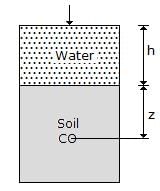
Previous sand is used in the foundation of a masonry dam such that upward hydraulic gradient permissible on it will be 0.345. Determine the factor of safely required against quicksand condition, if porosity and a specific gravity of soil solids are 0.40 and 2.65 respectively.
For a capillary rise in a soil mass, void size of which is assumed to be 20% of the effective size of the particle (D10), surface tension is observed to be 73 × 10-3 N/m. Calculate the value of empirical constant given by Hazen in cm2 void ratio of the soil sample is 0.30. Take γw = 10 kN/m3
Steady-state seepage is taking place through a soil element at Q, 2 m below the ground surface immediately downstream of the toe of an earthen dam as shown in the sketch. The water level in a piezometer installed at P, 500 mm above Q, is at the ground surface. The water level in a piezometer installed at R, 500 mm below Q, is 100 mm above the ground surface. The bulk saturated unit weight of the soil 18 kN/m3 and the unit weight of water is 9.81 kN/m3. The vertical effective stress (in kPa) at Q is
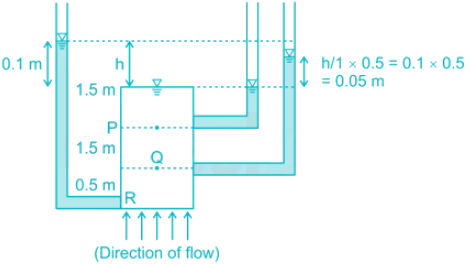
A lake of depth 15 m is filled with water up to a depth of 10 m from the Bottom of the lake. Soft clay is present below the bottom of the lake up to a certain depth of more than 20 m. Submerged unit weight of the clay is given as 9.5 kN/m3. Take γw = 10 kN/m3. Calculate the effective Stress (kN/m2) at a depth of 15 m below the bottom of the lake.
Assuming that a river bed level does not change and the depth of water in the river was 10m, 15m, and 8m during the months of February, July and December respectively of a particular year. The average bulk density of the soil is 20 kN/m3. The density of water is 10 kN/m3. The effective stress at a depth of 10 m below the river bed during these months would be
|
31 docs|280 tests
|
|
31 docs|280 tests
|






 Calculation:
Calculation: